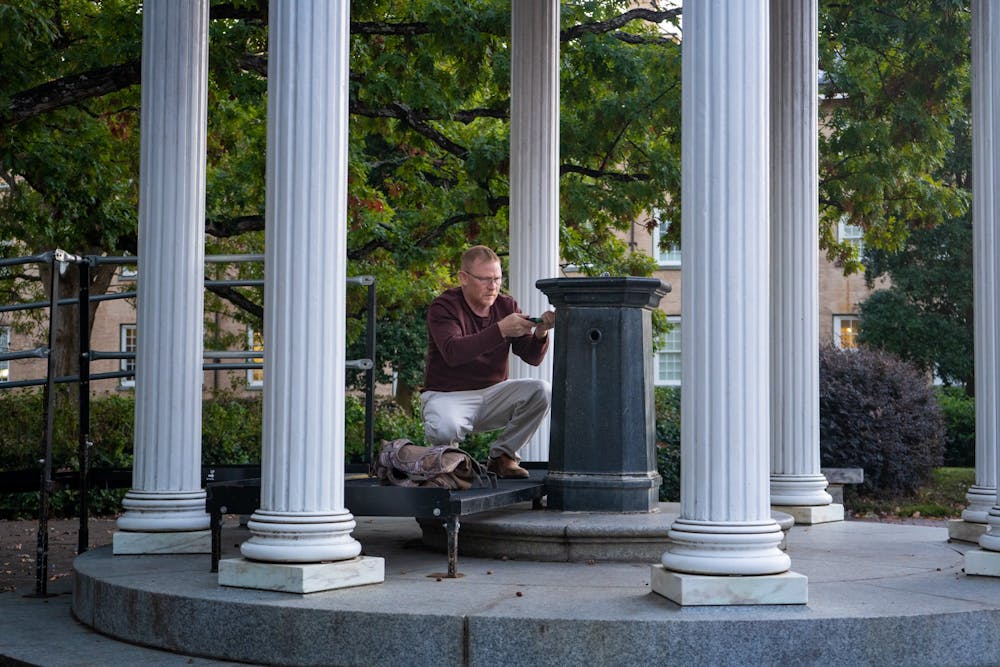Spencer Residence Hall
Fifty-seven out of 84 in-room sinks in Spencer Residence Hall are among those to be found with detectable levels of lead last week.
The results ranged from 1.1 ppb to 34.6 ppb. Only three of the sinks had lead levels above the EPA action threshold.
Battle said the situation is unique since no other on-campus residence hall has in-room sinks and remediation methods will depend on the ongoing investigation into the source of lead.
Spencer Residence Hall was built in 1924 and was added on to in 1958. A 2017 renovation included replacing the in-room sinks, according to a University spokesperson.
Multiple drinking water stations have been installed on each floor for residents and the University hosted a Zoom video call with the residents to address any of their concerns.
Rebecca Fry is a professor in the Department of Environmental Sciences and Engineering who currently serves as a scientific advisor to the University.
“Metals are ubiquitous in the environment,” Fry said. “But there are differences in terms of how children and adults respond to metals exposure, and the health effects are tied to several things: the timing of exposure, the duration of exposure, the concentration of exposure."
She said overall, the risks from lead exposure are very individualized, such as one's nutritional status.
“We know from lead that the fetus and young children are most susceptible,” Fry said. “And we also know from the literature that the health effects that are generally observed in adults have been tied to chronic exposure through their work, like mining and welding.”
Blood lead testing
The University is offering any student, faculty or staff who work, live or study in affected buildings the opportunity to test their blood for lead.
To get the day's news and headlines in your inbox each morning, sign up for our email newsletters.
“From the toxicology standpoint, there's no safe level of lead, that we should act aggressively, we should use an abundance of caution,” Fry said.
Students and post-doctoral fellows interested in being tested can contact Campus Health at 919-966-2281. Employees are able to contact the University Employee Occupational Health Clinic at 919-966-9119.
Fry said the blood testing has already been utilized by many faculty, staff and students.
“We have no concerning blood lead levels that have come back. That's the most that we can say to protect privacy,” Fry said.
Kylie Broderick, a doctoral student in the history department, is teaching two recitations this semester in Hamilton Hall — where three sinks and three drinking fountains were found with detectable levels of lead. She got her blood tested for lead since she regularly drank from one of the fountains that tested was nearly 27 times the EPA’s actionable threshold.
Her result was one microgram per deciliter (µg/dL). Levels above five µg/dL are considered elevated by the Centers for Disease Control and Prevention.
Broderick said she was not given any context about her results after receiving them.
“The results in the file are a little confusing," she said. "I could see that I had a one pretty easily, but they didn't tell you in that data file, whether one was an acceptable level or what it was measured against. I'm no medical person or scientist, so I didn't understand it. I had to Google what it meant.”
She said she was frustrated at the University's response to lead being discovered in many campus buildings.
“I think it's ridiculous,” Broderick said. “I don't think that I am unique in saying it.”
Lead in campus water is not a new phenomenon. In 2007, four newly constructed or renovated buildings were found to contain lead in drinking water due to the installation of brass fittings.
Student volunteers
Battle said along with Environment, Health and Safety staff and an outside contractor, student volunteers have been recruited for water sampling.
“We as a school wanted to respond as aggressively, as quickly, as efficiently as we could,” Fry said, who is assisting with recruiting student volunteers. “And so one of the options on the table was to see if there were students who were interested in helping to test.”
About 30 trained students from environmental-focused programs will soon be part of the cohort. Fry said they will go through hands-on training and an exam before being allowed to test campus water.
Celeste Carberry, a third-year environmental health sciences PhD student, is one of the students who volunteered to assist with the two-day testing procedure, which involves flushing water sources and collecting samples the next day.
“This is a unique opportunity to be part of the solution to this environmental safety concern,” she said in an email. “I felt it was important to help this effort in any way I could.”
She said it was concerning to hear about lead in drinking water on campus.
“I think continued water testing is an important first step to identify any remaining drinking fixtures with detectable levels of lead. From there, solutions can be implemented to ensure the continued health and safety of UNC-Chapel Hill students, faculty, and staff via safe and clean drinking water,” Carberry said.
@forepreston
university@dailytarheel.com



